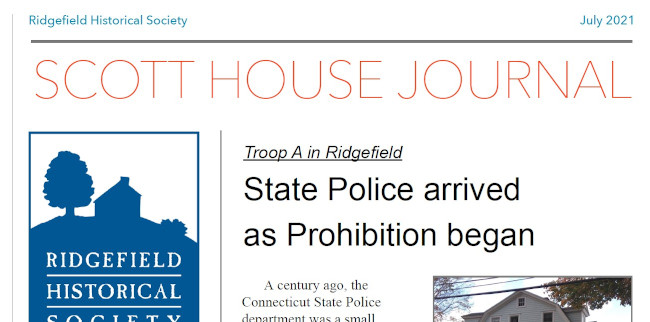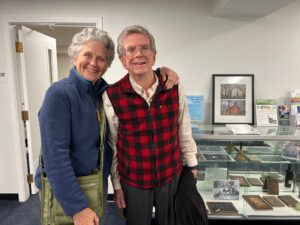In this installment of the SHJ, the Historical Society announces the celebration of our 20th Anniversary with a series of programs and events kicking off on Saturday, October 2. The feature article is about Troop A in Ridgefield: State Police arrived as Prohibition began.
Troop A in Ridgefield: State Police arrived as Prohibition began
A century ago, the Connecticut State Police department was a small agency with a handful of officers, but in 1921, as Prohibition took effect, it expanded rapidly: Among seven new barracks established outside of its original Hartford base was one in Ridgefield.
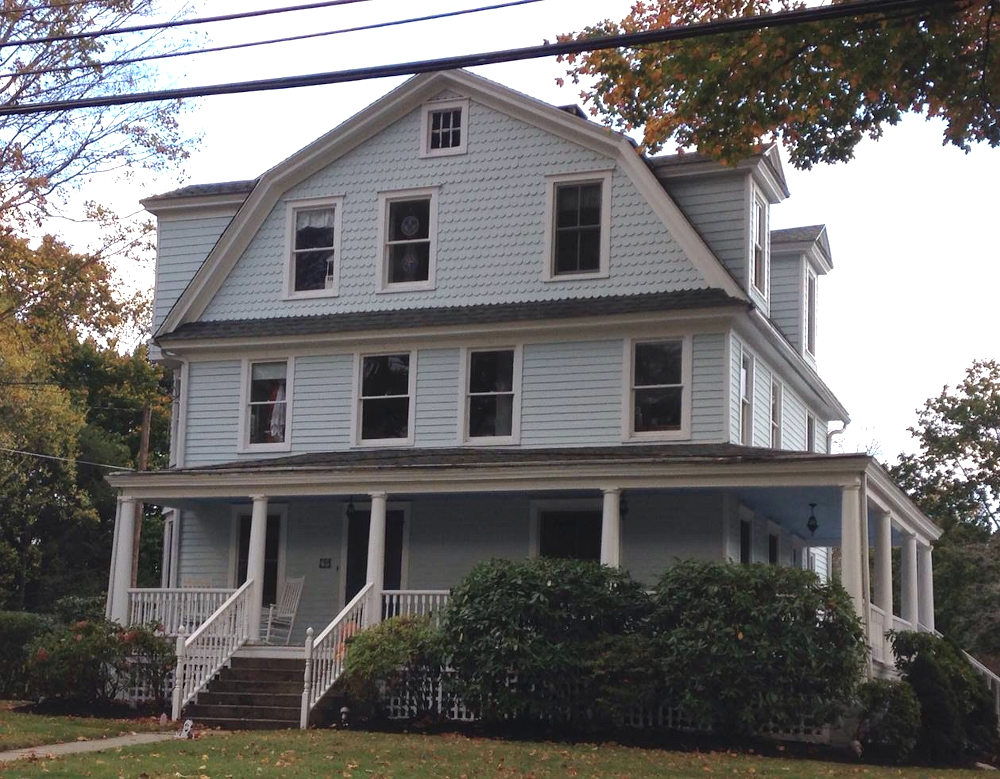
One hundred years ago and for more than half a century, the Connecticut State Police were a presence in Ridgefield. When they moved their Troop A operations, it was to a new building convenient to I-84, where much of the troopers’ activities are now concentrated. The departure for Southbury in 1974 left a building that was already part of Ridgefield history and has now served as headquarters for the Ridgefield Police Department since 1976.
The connections between Ridgefield and the Connecticut State Police were many and both personal and political. Before being elected Connecticut’s Governor in 1899, George E. Lounsbury of Ridgefield was a state senator in 1895 when Connecticut organized the United States’ first state police department, a four-agent squad called the Law and Order League of Connecticut. These original state policemen were tasked with enforcing state liquor and vice laws, which, according to an unofficial Connecticut State Police history, “at the time were being ignored by local authorities.” In 1903, the Connecticut State Police was formally organized with five officers under the direction of Superintendent Thomas F. Egan. State Comptroller Harvey P. Bissell, another Ridgefielder, was one of three State Police commissioners charged with reorganizing and expanding the state police in 1921. Not surprisingly, one of the new stations was Troop A in Ridgefield. (In addition to Bissell’s connection, the proximity to the New York State border and routes that served bootleggers were important considerations. Prohibition had just begun in 1920.) Now a private home, this first barracks (troopers lived there during several-day shifts) was on West Lane and was commanded by Capt. Willard E. Bushy.
According to a history of the State Police written for The Ridgefield Press by Leo F. Carroll, a longtime member of the force and later Ridgefield’s first selectman, the expansion of the department incorporated inspectors in the Motor Vehicle Department, “of which John C. Kelly of Ridgefield and Leo F. Carroll of Bethel were experienced members.”
Describing the early years of the State Police, Mr. Carroll wrote, “The training school for the State Police was established at Boxwood Manor in Old Lyme. In the school were the original state policemen, some motor vehicle inspectors, and the new recruits, chief among them Edward J. Hickey who later became State Police Commissioner, John C. Kelly who did likewise, William H. Brennan of Stamford who became the Republican leader of the state, Frank A. Virelli, the brilliant detective, Frank Nichols of Weston who, like the writer [Mr. Carroll] became the major and executive officer of the department, and ever so many more, including Captain Robert T. Hurley, the authority on incendiary fires who later became commissioner of the State Police when the department moved from the three-man commissionership to one.”
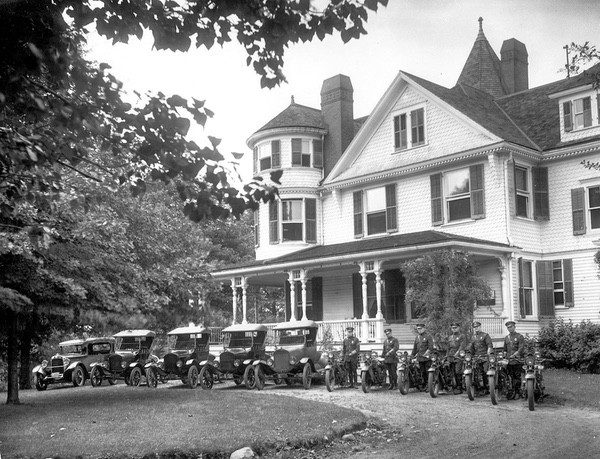
According to Mr. Carroll’s history, it was four years after the State Police established Troop A in Ridgefield that the department moved to East Ridge, to a grand Victorian home that had been built by Gov. George E. Lounsbury around 1890. While Gov. Lounsbury and his family lived at the family homestead, The Hickories, in Farmingville, the home was leased from around 1893 to 1905 to the Vinton sisters, Gertrude and Elizabeth, who operated a private school for girls there. When George Lounsbury died in 1904, the house was bequeathed to his nephew, Postmaster George Lounsbury Rockwell (author of the 1927 History of Ridgefield).
When the Connecticut State Police acquired the property from Mr. Rockwell, the building continued with an educational component while becoming the “new” barracks for Troop A. “One of the important points in this purchase,” wrote Mr. Carroll, “was contained in the fact that the Training School could now be located in Ridgefield in this large and comfortable home, a much more suitable location than the seasonal Boxwood Manor property” in Old Lyme. In the 1930s, the barracks was extensively renovated through the Works Progress Administration, adding a shooting range and “the finest cell block in the area” and “the elegant garage for the mobile equipment,” according to Mr. Carroll.
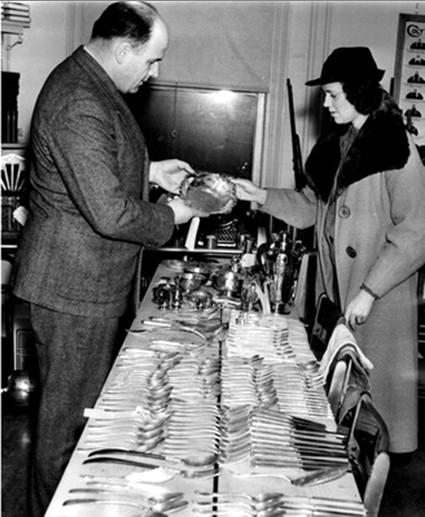
Describing life at the barracks on East Ridge, Mr. Carroll recalled, “Three times each day and sometimes oftener the troopers would gather around their tables at the Ridgefield Barracks for meals that most if not all of them had never before enjoyed. It is not possible to evaluate these gatherings where real men exchanged their ideas and their thoughts and information in the interests of good fellowship and substantial justice. The life there for most, I am sure, is among their fondest memories.”
At the time, the troopers were responsible for all of Fairfield County as well as parts of Litchfield and New Haven counties. While towns such as Ridgefield employed constables who handled minor breaches of the law, the State Police were called in for major crimes.
“The Ridgefield barracks down through the years seemed destined to be called upon for help during every emergency in the state,” wrote Mr. Carroll. “Few major crimes have been handled without a lift from the men from the Ridgefield station that has been nicely remembered as ‘The Scotland Yard of the Connecticut State Police.’”
There were many major cases cracked by the men of Troop A, but one that Mr. Carroll had a personal hand in and enjoyed recounting was the silver robbery at the F.E. Lewis home, Upaganstit, off West Lane.
“This job was carried out while the help was sleeping and with several dogs on duty,” recalled Mr. Carroll. “…Other towns and cities were also having silver thefts (flatware and sterling silver services only were taken).
“One night shortly after midnight, Lt. Amos Anderson of the Darien Police phoned the barracks that he had just picked up a man who he thought might be the silver thief we were all looking for.” When the man was brought to the barracks, then-Lt. Carroll found a unique method of obtaining a confession.

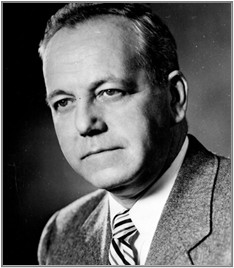
“At the barracks this man proved to be a cool, middle aged fellow, delighted, it seemed, to be a house guest of ours. As we were getting some information on him he made reference to the corned beef that was cooking in our kitchen, the odor of which was creeping through the entire barracks. Our guest let us know that it was a long time since he had a corned beef meal and he casually remarked about the old days before Prohibition when one could have a bottle of beer, too.
“The small talk continued and then out of the clear, the man inquired how we were doing on the silver robbery in Ridgefield that had made all the papers. When we told him truthfully that we were not making out and would appreciate his help, for by now we had established that he had a record of sorts. He proposed a deal: If we got him a bottle of beer for his dinner with the corned beef he would get us some valuable information.”
While liquor was never a part of the barracks life, particularly during Prohibition, “It just so happened,” wrote Mr. Carroll, “that [I] knew a plumbing contractor who was proud of his home brew production and from him we secured one bottle of beer. Looking right into the brew [the suspect] said he thought he could see the location of the hampers and the flannel bags that had contained our missing silver. When one of the boys became a doubting Thomas, our man continued to look into the brew and said he thought the smell of camphor was still present.
“This was it. Our silver was in flannel bags sprinkled with camphor and in hampers. After dinner, he took us to South Salem, where in the woods we got the hampers, the bags still smelling of camphor. Later through this man we were able to recover some of the silver table service, but most of the original silver had been sold to a fence who in turn had disposed of it to the government assay office where it was melted up (or down, depending on how this operation is performed).”
“Our man,” wrote Mr. Carroll, “of course, went to Wethersfield [state prison] for a long term. He died there and was buried in the prison graveyard.”
Leo Carroll concluded his career with the Connecticut State Police after 34 years having achieved the rank of major and executive officer; he then served as chairman of the State Liquor Commission, 10 years as Ridgefield’s first selectman, and six years as a school board member. Although he was a Bethel native (born in 1900, he was one of 13 children), he found his home in Ridgefield and for many years lived on Wilton Road West where his next door neighbor was John C. Kelly, the fellow state policeman who eventually became head of the entire force.
Always a colorful presence and a great storyteller, Leo Francis Carroll died at the age of 84 in 1985.
John Kelly, like Leo Carroll a member of a large Irish family, was born in Ridgefield in 1895. His paternal grandparents, Mr. and Mrs. Patrick Kelly, were among the first Catholic families to settle here.
When World War I broke out, he enlisted in the Navy and served on submarine chasers. After the war, he joined the state motor vehicle patrol, a motorcycle unit. In 1921, the motor vehicle patrol became part of the rapidly expanding Connecticut State Police. In 1922, he was promoted to sergeant and given command of the new Ridgefield barracks, located on West Lane.
By 1931, Kelly was instruction officer for the whole state and in 1945, he was made a major and executive officer of the state police department. Four years later, he was named chairman of the State Liquor Control Commission. In 1953, Governor John Lodge appointed him commissioner of the Connecticut State Police, the equivalent of a chief of police, a command he held until 1955. After his retirement, he served several terms as a state representative from Ridgefield to the Legislature. After that, he worked as a legislative consultant until he was 82. He died in 1984 at the age of 88, still living in the town in which he was born.
Many other state police officers have made Ridgefield their home; several rose through the ranks to command positions, including Jack Jones, Jack Croce and Joseph Pirri. Other Ridgefielders were civilian employees at Troop A, including Louis “Squash” Travaglini, who was a dispatcher for many years, and Mary Walker, who was the longtime clerk at the Ridgefield barracks. “Squash” (brother of Aldo “Squash” Travaglini of the Ridgefield News Store) retired from the State Police when Troop A moved to Southbury and in a couple of years was back as a dispatcher for the Ridgefield Police. His surroundings were familiar, because the Town of Ridgefield had taken over and renovated the old barracks for use by the Ridgefield Police Department.
While it’s now fairly rare to see a Connecticut State Police cruiser in Ridgefield, the State Police may still be called on to assist with major crimes and disasters, providing manpower and technical support. The 41-member Ridgefield Police Department’s officers have primary responsibility for the town.
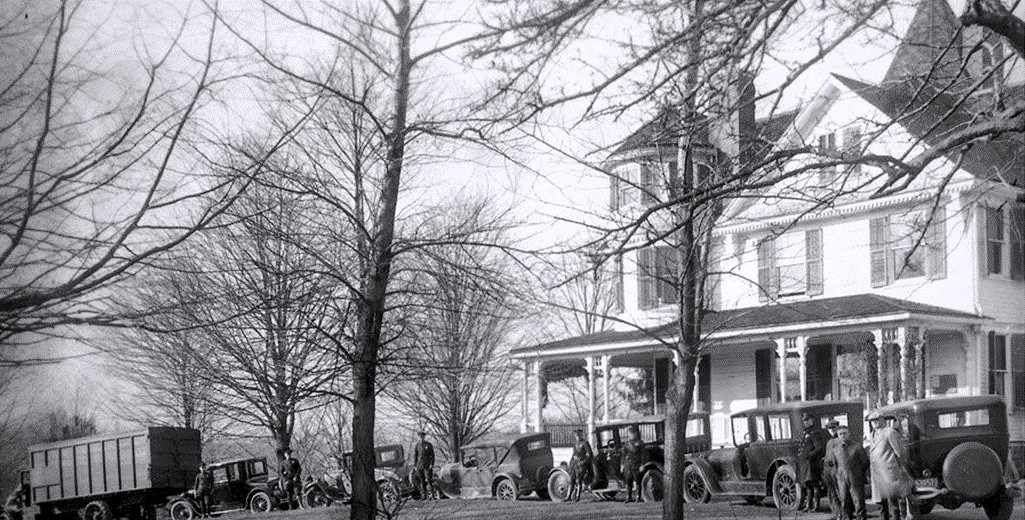
20th Anniversary Events
The Ridgefield Historical Society’s year-long 20th anniversary celebration will start with our annual membership campaign in September and will have a festive kick-off during the first weekend in October, with an afternoon celebration at the Scott House.
A series of craft-making programs will take place during November at the Peter Parley Schoolhouse on Sunday afternoons and the popular Silhouettes program with artist Deborah O’Connor will return Saturday, Dec. 4, 2021, at the Scott House.
New this year, Holiday Tours of the Scott House will be offered on Saturday and Sunday, Dec. 11 and 12, 2021. We’ll be introducing the new LEGO Sculpture Contest in November, with entries due in January.
President’s Message
Greetings:
I am so pleased to report that the Ridgefield Historical Society is celebrating its 20th anniversary this year. To celebrate this milestone, we are planning a full roster of family-friendly programming, special events and a commemorative publication to highlight our Town’s rich history.
We also want to take the opportunity to honor the visionary founders of our organization. This small group of concerned citizens had the foresight to save the 18th century original proprietor’s house that serves as our headquarters today.
We have also officially opened our doors again at the Scott House to staff and volunteers, and to the public by appointment.
Sundays at the Peter Parley schoolhouse have resumed the last Sunday of the month, 1:00 – 4:00, through October. Please visit the 18th Century one-room schoolhouse, enjoy the exhibits and speak with Sally and Jack Sanders about its history.
And lastly, the Historical Society has been included in Ridgefield’s newly designated Cultural District.
We can only hope that our organization’s founders would be proud of how much we have grown and continue to further our mission.
There is plenty going on, so please visit our website for updates. We have an exciting year ahead and hope you will join us to celebrate this significant anniversary.
TRACY SEEM,
President,
Ridgefield Historical Society

